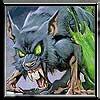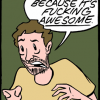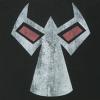Currently I am working on a puzzle design which incorporate 2 mazes -- 1 maze acts as the roof to the other. At various points in the maze you have the ability to transition from 1 maze to the other. The idea being to utilise both mazes in order to reach the centre. Within a game context I would want the roof maze to be visible to the ground maze - so that paths could be tracked through the opposite maze by simply looking up and figuring it out. In of itself the maze idea is fairly straightforward - transition points I would signify by something akin to a light beam stretching between the exit/entry locations on both mazes enabling the player to have a reference point from which to map the maze opposite.
The seconday aspect of this puzzle is the monster who pursues the player and this is where I am having an issue.
How do I ensure that the player successfully navigates the maze under the time constraint provided by the monster without the monster actually catching up too quickly. Several thoughts I have had on this are:
- There are 2 monsters - 1 on either side - they only pursue whilst the player is on their side
- There is only 1 monster on the "ground" side where the maze is completely contiguous and the player must use the "sky" maze which consists of smaller mazes against each other to try and leapfrog the monster. The monster not being able to use a transition point.
- A simple pursuit aka Slender man by where you have x amount of time to navigate the maze before you are simply pounced upon.
This puzzle is in connection to a horror genre.
What are your thoughts on how the monster should behave?

A conceptualised idea of the maze - gah forgot to mention fair use of another's work
Note: Forgot to mention - When you transition gravity is reversed - so your ground becomes the sky and the sky becomes your ground.









